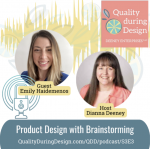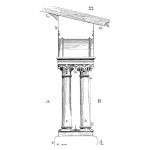
After the ‘Storm: Group and Explore Ideas
We’re in our 3rd episode into our series about generating ideas with our team toward action. The previous two episodes were all about idea generation.
We’re now at the point where we have many ideas and no next steps.
Let’s group and explore our ideas so we can move toward action. We explore these Quality Tools and how to use them after a brainstorming or other idea-generating team activity:
- Affinity Diagram team sorting method
- Fishbone
- Tree Diagrams








